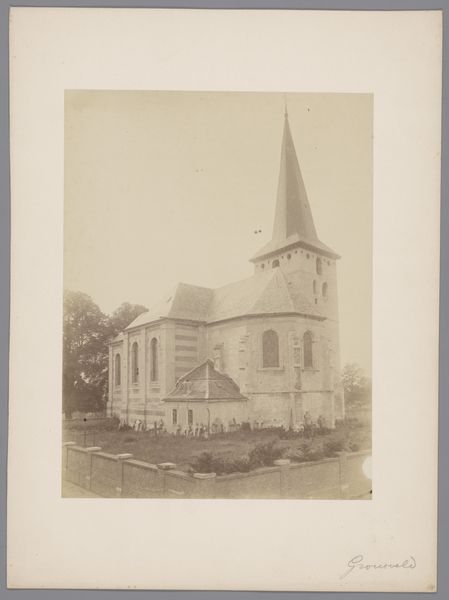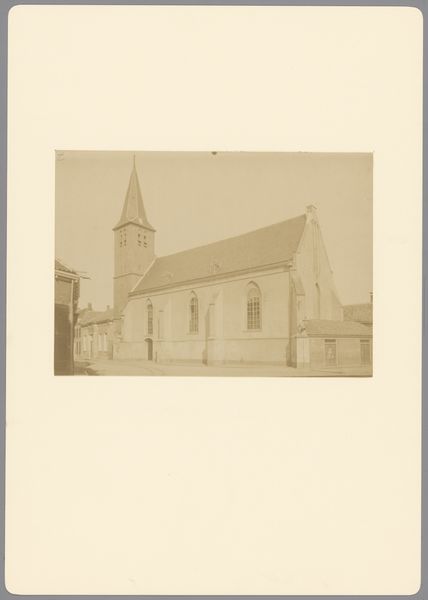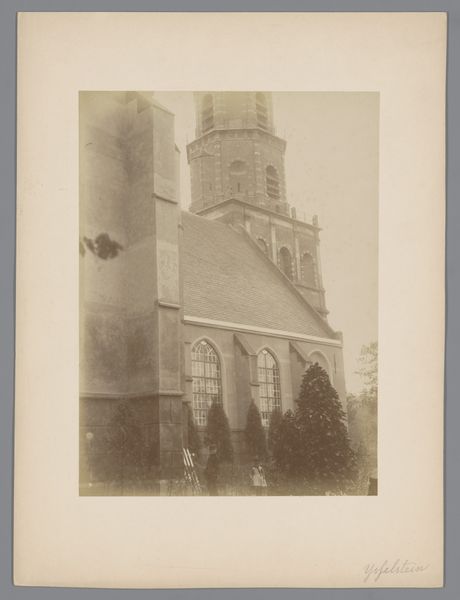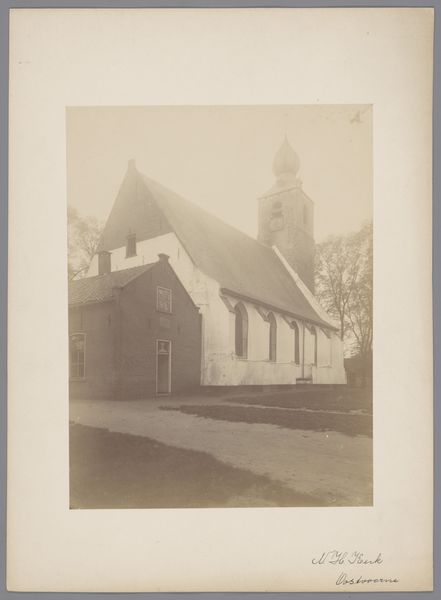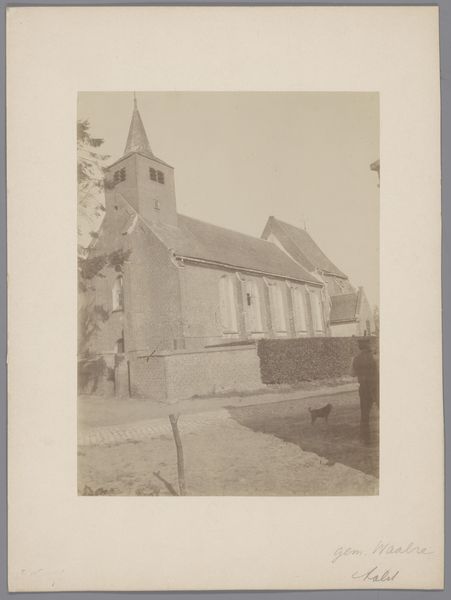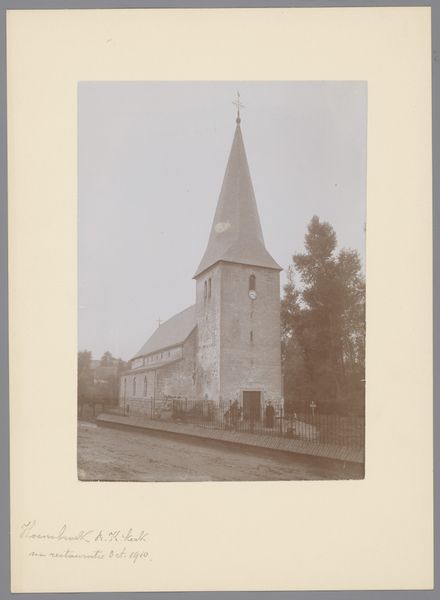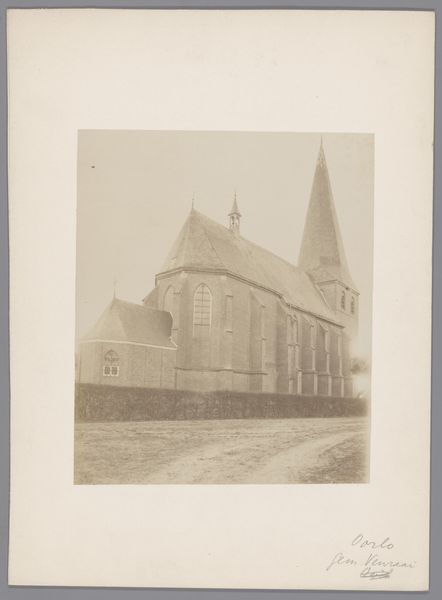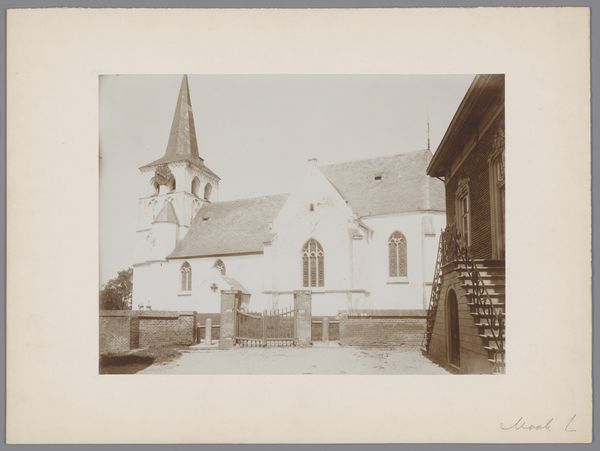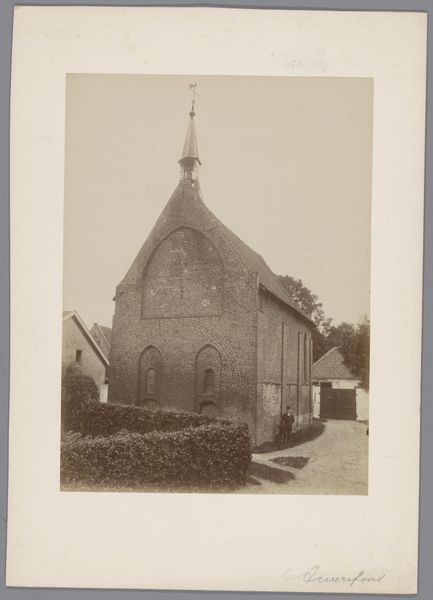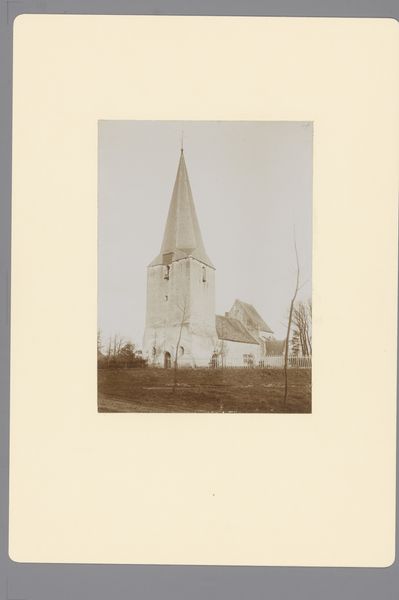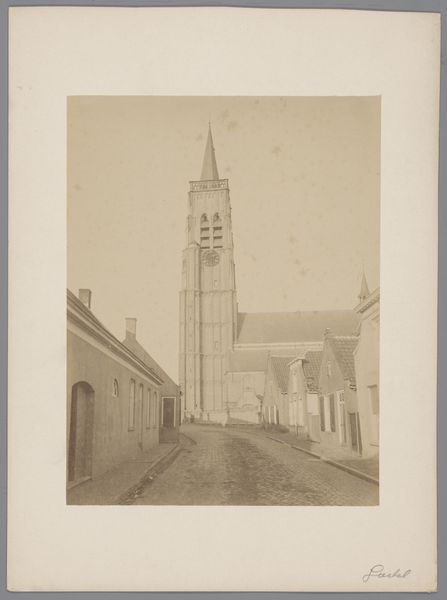
print, photography, architecture
# print
#
landscape
#
charcoal drawing
#
street-photography
#
photography
#
architecture
#
realism
Dimensions: height 70 mm, width 82 mm
Copyright: Rijks Museum: Open Domain
Curator: This is "Church on the Road between Audierne and Douarnenez in Brittany", taken around 1901. It's a fascinating photographic print. Editor: My initial reaction is one of somber stillness. The sepia tones lend it a sense of history and perhaps even a touch of melancholy. Curator: Indeed. Delizy, the photographer, seems interested in capturing a sense of place, highlighting the labor and material of its making. Look at the texture of the church stone. One wonders what social dynamics are present in the act of capturing it. Editor: Absolutely. And the church's prominence underscores the role religious institutions played—and still play—in shaping community identity and social structure. Note how the small figures almost disappear against the heavy stone and high architecture, emphasizing the building's cultural power. Curator: It also draws attention to photographic processes. The choice of photography as medium, compared to painting at that time, is really important as a document to the conditions of labor in its making. Editor: I agree. It makes one think of the democratization of imagery through technological advancement and the role photographs have in framing our understanding of social change through visual representation. How do you view the symbolism? Curator: For me, it’s very matter-of-fact; it is primarily concerned with photographic production. How can a photographic print emulate artistic form without completely shedding the objectivity aligned to photographic capture? Delizy uses printing to emphasize, I suspect, the making in of itself. Editor: An interesting take. While I appreciate the emphasis on photographic production and how printing might impact the process of its consumption and perception, I see that architecture as indicative of established systems. Its heavy form certainly lends a weight of the powers embedded in religious and community institutions of that time. Curator: A stimulating reading. The contrast in our analysis highlights the complexity of visual documents and the different cultural lenses through which meaning can be constructed. Editor: Agreed, it gives depth to what can be extracted and observed from the photograph as an art piece but as also a critical document from the period in which it was produced.
Comments
No comments
Be the first to comment and join the conversation on the ultimate creative platform.
